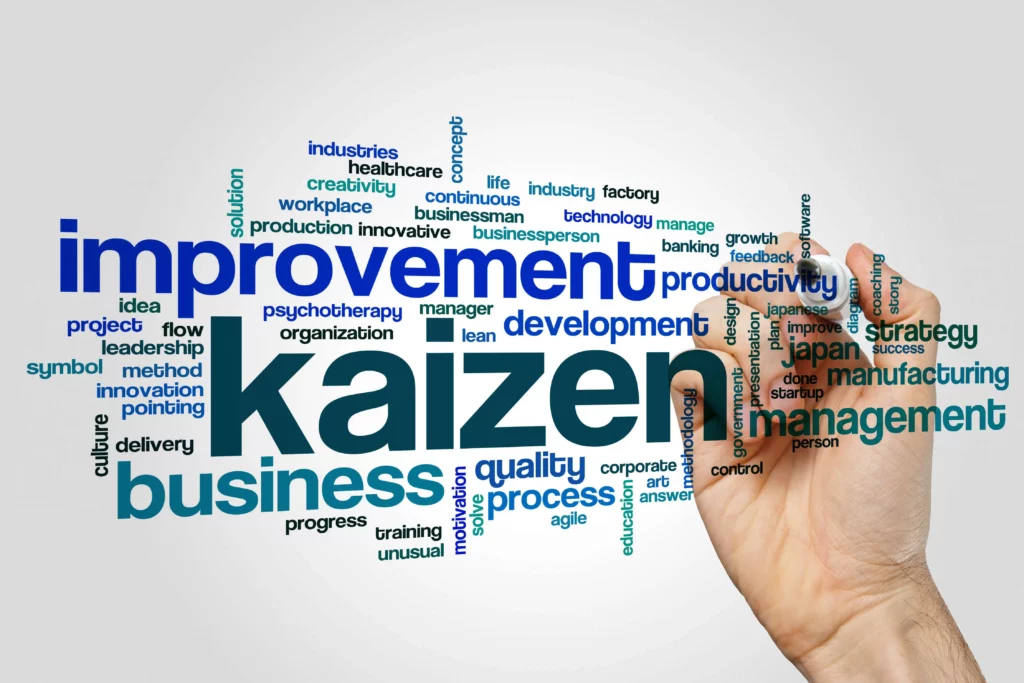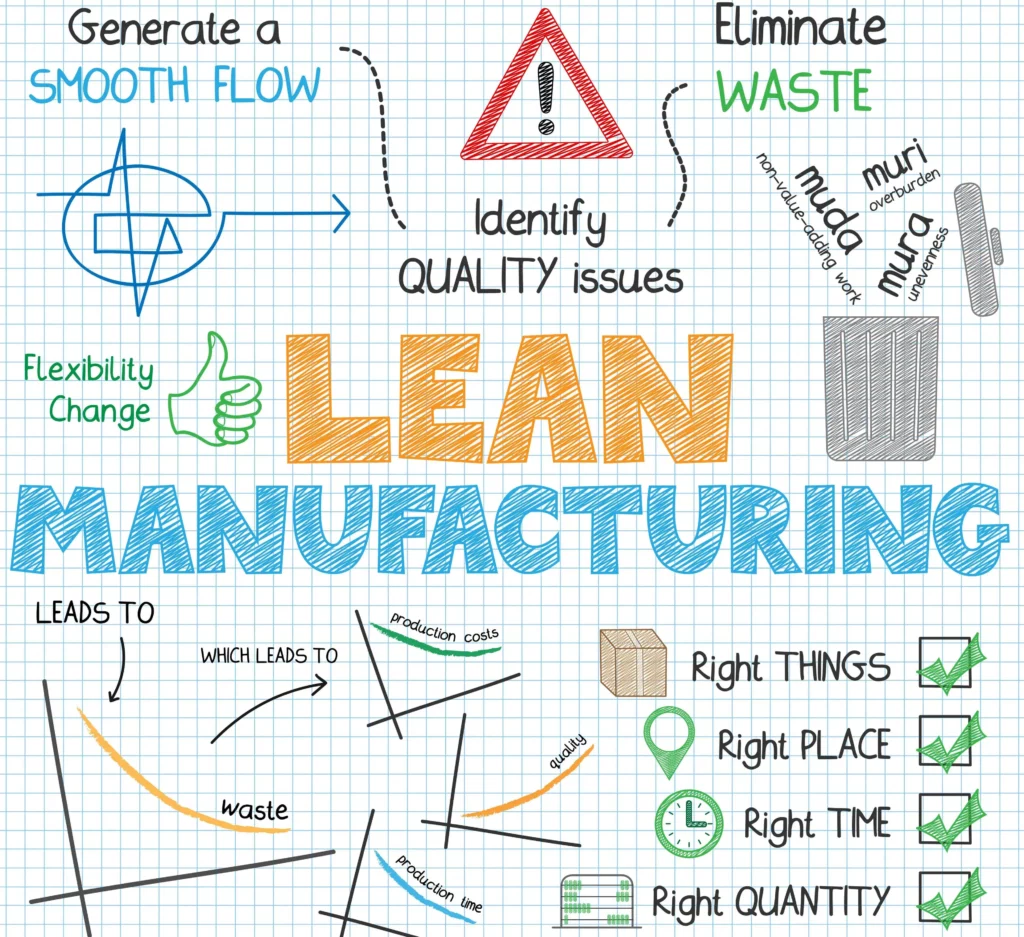Lean Management and Its Principles
Lean management is a philosophy that originated in the manufacturing industry, but it has since been adapted to various industries, including healthcare, construction, and even software development. The principles of Lean Management are based on the idea that every step in the process should add value to the customer, and anything that does not add value should be eliminated. The ultimate goal is to maximize value and eliminate waste.
One of the key principles of Lean Management is continuous improvement. This involves constantly reviewing and improving processes to ensure they are as efficient as possible. To achieve this, many organizations have adopted the Kaizen approach, which involves making small, incremental improvements continuously. This approach ensures that teams are always looking for ways to improve their processes, and over time, these small improvements can lead to big gains in efficiency and productivity.
Another principle of Lean Management is the focus on customer value. This means that the customer’s needs and wants are at the forefront of everything the organization does. By understanding the customer’s needs, organizations can tailor their processes and products to meet those needs, which ultimately leads to higher customer satisfaction.
The third principle of Lean Management is respect for people. This involves creating a culture of continuous learning and improvement, where employees are encouraged to share their ideas and contribute to the organization’s success. This principle recognizes that people are the most valuable asset of any organization, and by empowering them, organizations can improve their processes, products, and services.
Lean Management has several benefits for businesses, including improved efficiency, reduced costs, higher quality products or services, and increased customer satisfaction. By eliminating waste and focusing on customer value, organizations can streamline their processes, reduce costs, and deliver products and services that meet or exceed customer expectations. This, in turn, can lead to increased revenue and profitability.

How Lean Management Applies to Quality
Lean management is a philosophy that has been adopted by businesses around the world to improve their operational efficiency while enhancing quality. This approach is based on the concept of delivering value to the customer by eliminating waste and maximizing productivity.
The fundamental principle of lean management is that every process within an organization should add value to the customer. This customer-focused approach ensures that processes are streamlined, standardized, and continuously improved to meet the needs of the customer.
In practice, this means that lean management requires a systematic approach to identify and eliminate waste, which is known as “muda” in Japanese. This waste can take many forms, including unnecessary steps, waiting time, overproduction, defects, excess inventory, and underutilized talent. By identifying these inefficiencies and eliminating them, businesses can optimize their processes and improve quality, while also reducing costs and increasing productivity.
One important aspect of lean management is its emphasis on continuous improvement. This means that businesses need to establish a culture of continuous improvement, where all employees are encouraged to identify and eliminate waste in their respective areas. This culture of continuous improvement fosters creativity and innovation, enabling businesses to stay ahead of the competition.
Another core component of lean management is standardization. Standardization involves creating a consistent process for all aspects of the business, from production to customer service. This consistency ensures that quality is maintained across all operations, and customers receive a consistent experience when interacting with the business.
Furthermore, lean management also involves creating a culture of respect for people. This means treating all employees with dignity and respect and involving them in decision-making processes. This approach ensures that employees are motivated and engaged and leads to a better quality of work, which ultimately benefits the customer.

Benefits of Lean Management for Businesses
Lean Management is not only a way to eliminate waste and increase efficiency, but it can also have a positive impact on the overall quality of a business’s products or services. By focusing on customer value and continuously improving processes, Lean Management can help businesses deliver high-quality products while minimizing errors and reducing costs.
One of the main benefits of Lean Management for business is improved customer satisfaction. Lean processes are designed to identify and eliminate any steps in the production process that do not add value for the customer. This means that the result is a product or service that meets the customer’s needs and expectations, resulting in increased customer satisfaction and loyalty.
Another benefit is increased productivity. By eliminating waste and streamlining processes, businesses can produce more products in less time, which can lead to increased sales and revenue. This increased productivity can also reduce costs, as fewer resources are needed to produce the same amount of products.
Lean Management can also lead to increased employee engagement and satisfaction. By involving employees in the process of eliminating waste and improving processes, they feel more invested in the success of the business. This can lead to increased motivation, better teamwork, and a more positive work environment.
In addition, Lean Management can help businesses identify potential quality issues before they occur. By continuously monitoring and improving processes, businesses can identify and address any issues that may affect the quality of their products or services, reducing the risk of defects or recalls.

Strategies for Implementing Lean Management in the Workplace
Lean Management is a philosophy that has proven to be highly effective in improving quality processes and outcomes for businesses. Its strategies and methodologies have been used by companies worldwide to streamline operations, minimize waste, and enhance productivity. This article will discuss some strategies for implementing Lean Management in the workplace.
1. Focus on Customer Value:
One of the primary objectives of Lean Management is to improve customer satisfaction by identifying and addressing their needs. Businesses should focus on determining what customers want and how they can achieve it through the products or services offered. By concentrating on the value that customers seek, businesses can eliminate unnecessary processes and enhance the overall quality of their products or services.
2. Identify Waste:
Identifying waste is a critical step in adopting Lean Management. Waste can take the form of overproduction, waiting, unnecessary motion or transportation, overprocessing, inventory or defects. A comprehensive audit of the processes should be conducted to identify all forms of waste. Once identified, businesses should work to eliminate these wastes from their processes.
3. Continuous Improvement:
Continuous improvement is the cornerstone of Lean Management. Businesses should be committed to constantly scrutinizing their processes, identifying inefficiencies, and creating an environment of continuous improvement. The goal of continuous improvement is to eliminate waste and enhance value to customers continually.
4. Employee Engagement:
Employee engagement is a crucial element in implementing Lean Management. It involves empowering employees to identify and solve problems in the workplace. By encouraging employees to take ownership of the processes and work together collaboratively, businesses can enhance quality and improve productivity.
5. Visual Management:
Visual Management involves the use of visual aids to control processes, indicate status, and provide the necessary information. Visual aids such as flowcharts, graphs, and diagrams can help to create transparency and accountability in the workplace. By using visual management, businesses can enhance the quality of their processes and make the work environment more efficient.
In summary, implementing Lean Management in the workplace is a systematic process aimed at eliminating waste, improving processes, and enhancing the overall quality of products or services. To achieve effective Lean Management, the focus should be on customer value, identifying waste, continuous improvement, employee engagement, and visual management. By adopting these strategies, businesses can create a more efficient and productive work environment that provides value to its customers, improves quality, and increases profitability.

Resources for Further Reading on the Topic
Lean management has become a popular approach to improving organizational efficiency and quality. By focusing on value creation, businesses can reduce waste and optimize processes, resulting in improved customer satisfaction, reduced costs, and increased profitability. In this article, we have highlighted the key principles of lean management and how it is applied to quality. Now, let’s dive into some resources for further reading on the topic.
Disclaimer: As an Amazon Associate I earn from qualifying purchases
1. “The Lean Six Sigma Pocket Toolbook” by Michael George, John Maxey, and David Rowlands
Considered a must-read for anyone interested in lean management, this book provides a comprehensive guide to implementing lean Six Sigma techniques. Covering everything from project selection to data analysis, the book is a valuable resource for improving organizational efficiency and quality.
2. “The Toyota Way” by Jeffrey Liker
This influential book explores the lean management techniques pioneered by Toyota, one of the most successful companies in the world. Liker demonstrates how Toyota’s principles of continuous improvement, respect for people, and standardization can be applied to any business to improve quality and reduce waste.
3. “Lean Manufacturing: Tools, Techniques, and How to Use Them” by William Feld
In this practical guide, Feld explains how to apply lean principles to manufacturing processes, from production planning to inventory management. By emphasizing the importance of streamlining operations and reducing lead times, this book is an excellent resource for improving quality and increasing efficiency in manufacturing.
4. “Lean Thinking” by James Womack and Daniel Jones
In this seminal book, Womack and Jones outline the five principles of lean thinking: value, value stream, flow, pull, and perfection. They argue that by identifying and eliminating waste in the value stream, companies can improve quality, reduce costs, and increase customer satisfaction.
5. “The Lean Manager” by Michael Ballé and Freddy Ballé
This book provides a practical roadmap for implementing lean management techniques in any organization. By focusing on the principles of continuous improvement, coaching, and leadership development, the authors demonstrate how to create a culture of excellence that drives quality and efficiency.
In conclusion, lean management is a powerful approach to improving quality and efficiency in any business. By understanding its principles and applying its techniques, organizations can optimize processes, reduce waste, and increase customer satisfaction. The resources listed above are just a few examples of the many books and articles available on the topic, providing valuable insights and practical advice for anyone looking to improve their business operations.




